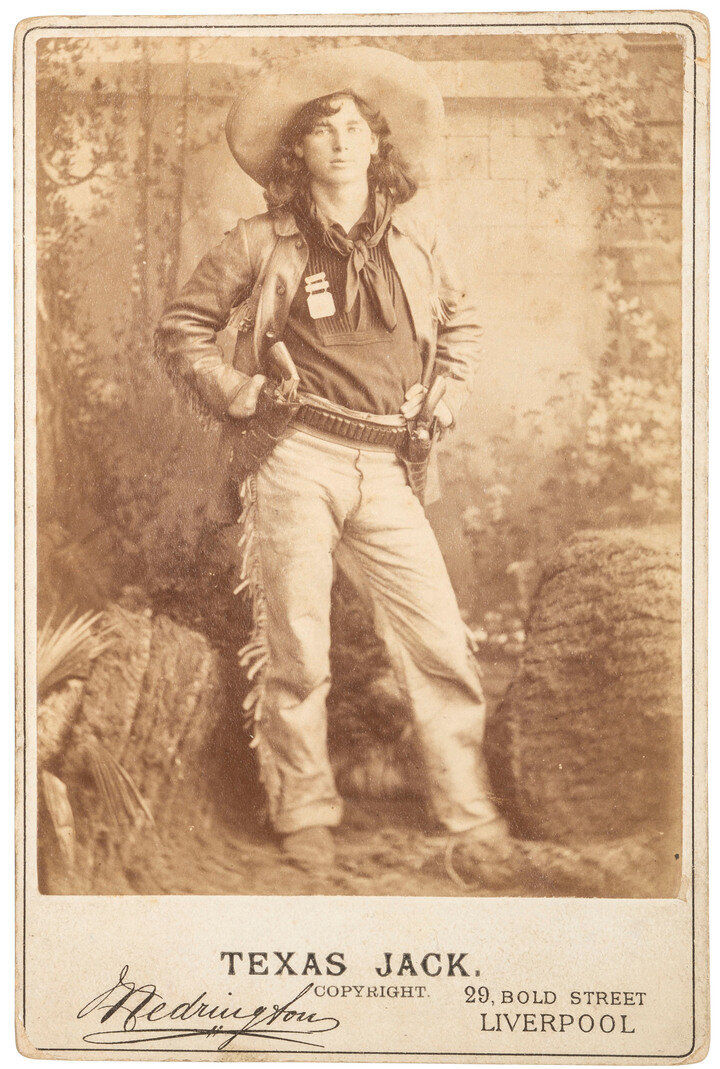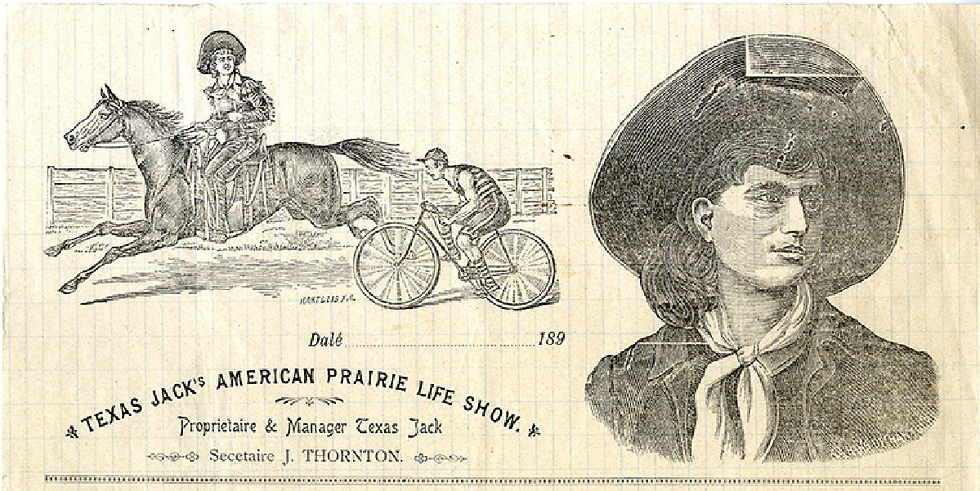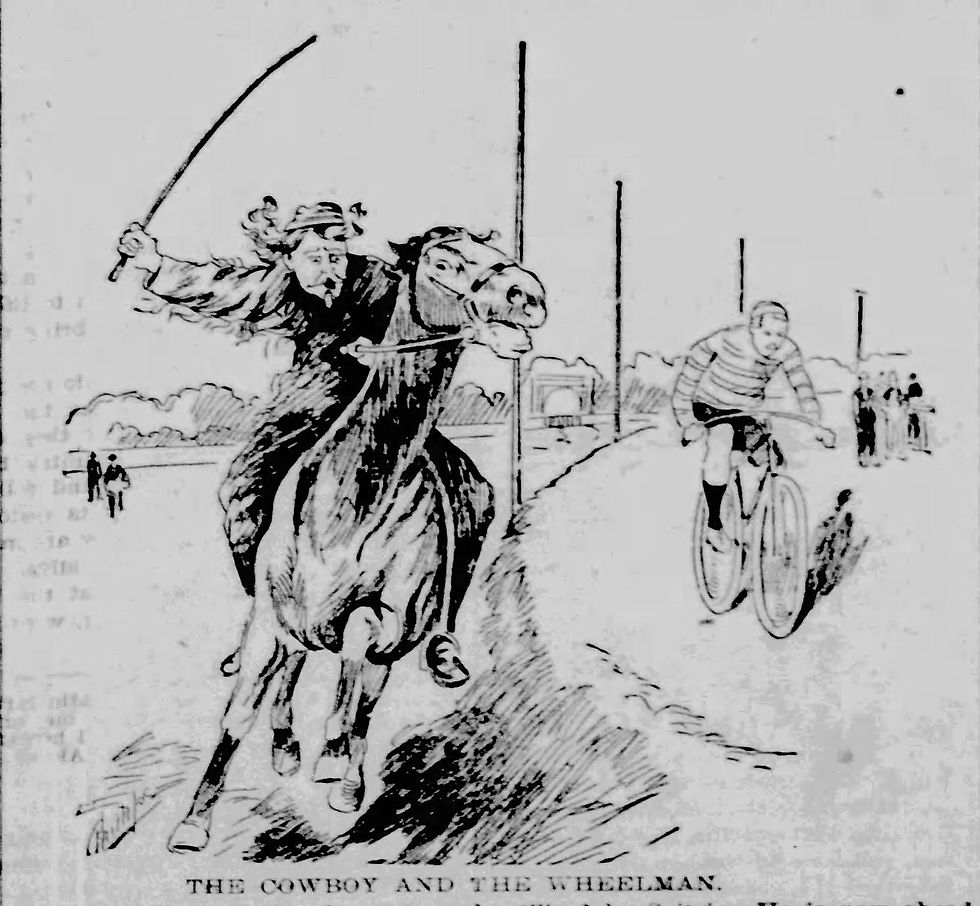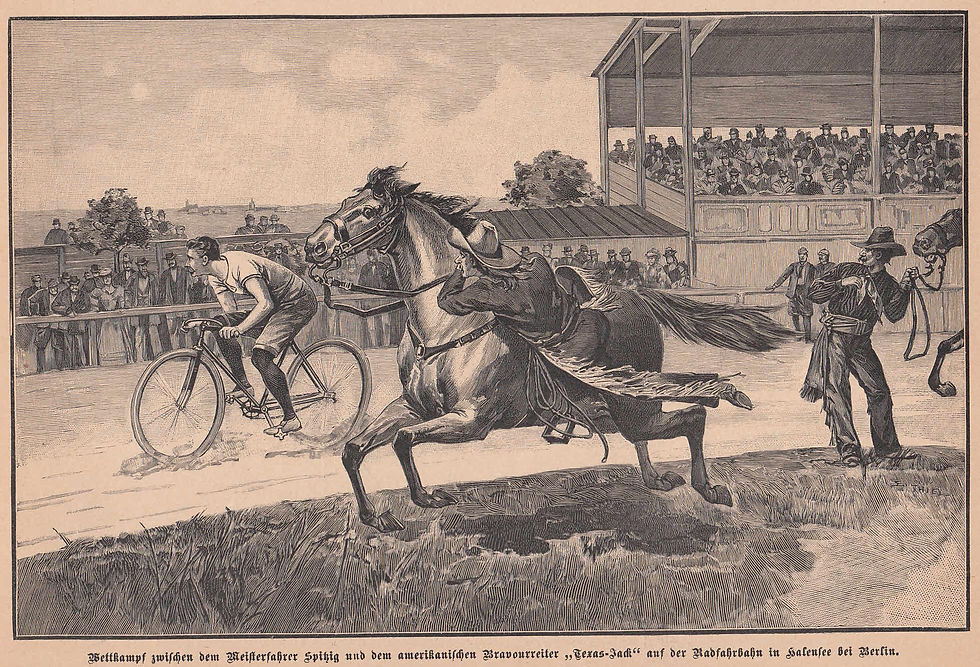Of Cowboys & Bicycles
- Matthew Kerns

- Jul 23
- 3 min read
In the decades after Texas Jack Omohundro helped define the image of the cowboy for audiences across America, his namesake and show-business heir, Texas Jack Junior, found new ways to keep the cowboy’s legend alive. One of the more unexpected paths for a Wild West showman in the 1890s was onto a racetrack, pitting horse against bicycle in dramatic contests of speed and stamina.

Junior, who had been rescued as a child from a Comanche camp by the original Texas Jack and adopted his name because he did not remember his own, spent his adulthood performing in shows that blended spectacle, skill, and cowboy mythology. Ever the self-promoter, he emblazoned the image of himself outrunning a cyclist on his "American Prairie Life Show" letterhead. That image was no exaggeration. Junior really did race, and sometimes beat, professional bicyclists.

One of his most high-profile rivals was the German cyclist A. Spitzig, with whom Junior competed multiple times in Europe during the 1890s. These races weren’t just novelty acts—they drew serious crowds and international press coverage, including a dramatic woodcut printed in Germany depicting the two men in fierce competition. A Berlin correspondent for the Toledo Weekly Blade offered a colorful account of one such race in 1894, where Junior and Spitzig faced off on a 30-kilometer course at Hallensee. Though the horseman lost this round to the aluminum-wheeled racer, the newspaper gave Texas Jack Junior his due as a showman of grit, gallop, and flair—racing not only for the win, but for the enduring mythology of the cowboy.
From the Toledo Weekly Blade newspaper, October 11, 1894 BICYCLE BEATS HORSE
The American Pony Loses a Race to an American Bicycle
The American pony has been defeated, but as the American bicycle triumphed over the horse, there is not much loss, says a Berlin, Germany dispatch.
Texas Jack and the German crack bicyclist, A. Spitzig, were the combatants in the race course at Hallensee. The distance was thirty kilometers, or 60 times around the course.
You know Texas Jack, of course, and you will know him better from the excellent picture coming with this letter. He is a man of middle size, very muscular, with a strong, weather burned face and long dark locks, wearing a fantastic cowboy costume.
Spritzig is the type of a sport, tall, full of vim and elasticity, muscular and with long legs. He appeared at the start on a bicycle constructed of aluminum, having two others in reserve. Texas Jack had five ponies at his disposal.

Jack opened the race on a little red horse, which, as he stormed ahead, seemed to be gifted with wings. The rider wore a soft hat, a long blue handkerchief and a mighty whip, which he did not spare. Spitzig at first seemed to be afraid to show his prowess. He followed his antagonist with his eyes, but not with his wheel, to any great extent. He was evident that he is of a diplomatic and careful disposition.
Now Jack had finished the first round: he changes horses at a run, to the great delight of his German audience, and away he starts. But the moment consumed in springing from one saddle into the other has been utilized by Spitzig. He is now ahead of Jack, and the race becomes intensely exciting.
Texas Jack's third pony, a little bar, is not a racer. Everybody can see that. The whip does good work, but can not lengthen the pony's legs. The man on the wheel gains constantly, and, though losing a few second in twice changing his bicycle, Jack does not succeed in getting ahead of him. When Spitzig passed the judges booth on the sixtieth round, Texas Jack was five laps behind.
I talked to the defeated American after the battle. He said his misfortune was due to the fact that the ground on the race course was not hard enough. His horses could not use all their leg power. Besides, they were not good at racing; the pony with which he started alone was sufficiently swift to warrant an undertaking such as beating the American bicycle.



Comments